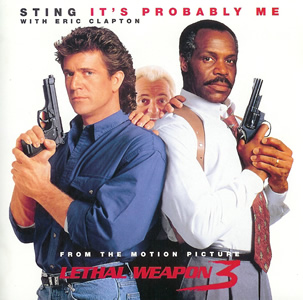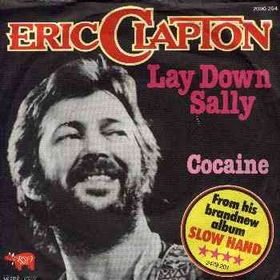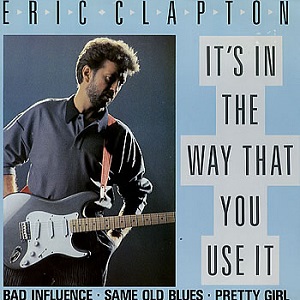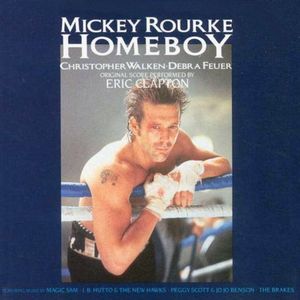
Pilgrim is the thirteenth solo studio album by the British rock musician Eric Clapton, released on 10 March 1998 for Reprise Records. The album features all-new studio-recorded material, the first to do so since Clapton's 1989 hit album Journeyman and was nominated for several music awards. Although most of the critics responded negatively to the 1998 studio effort, it was one of Clapton's most commercially successful albums, reaching the Top 10 in twenty-two countries.

"Layla" is a song written by Eric Clapton and Jim Gordon, originally recorded with their band Derek and the Dominos, as the thirteenth track from their only studio album, Layla and Other Assorted Love Songs (1970). Its contrasting movements were composed separately by Clapton and Gordon. The piano part has also been controversially credited to Rita Coolidge, Gordon's girlfriend at the time.

Unplugged is a 1992 live album by Eric Clapton, recorded at Bray Studios, England in front of an audience for the MTV Unplugged television series. It includes a version of the successful 1992 single "Tears in Heaven" and an acoustic version of "Layla". The album itself won three Grammy awards at the 35th Annual Grammy Awards in 1993 and became the bestselling live album of all time, and Clapton's bestselling album, selling 26 million copies worldwide.

The singles discography of Eric Clapton consists of 24 early career singles that Clapton recorded with various groups and singers including The Yardbirds, John Mayall & the Blues Breakers, Cream, John Lennon and the Plastic Ono Band as well as Derek and the Dominos. As a solo performer, Clapton released 91 singles and various promotional formats from 1970 to date. His most commercially successful singles are "Lay Down Sally", "Wonderful Tonight", "Change the World", "Tears in Heaven" and Bob Marley's "I Shot the Sheriff", released in 1974, charting substantially better than Marley's own earlier release had, becoming a Billboard Hot 100 number-one hit.

"1979" is a song by American alternative rock band the Smashing Pumpkins. It was released in 1996 as the second single from their third studio album, Mellon Collie and the Infinite Sadness. "1979" was written by frontman Billy Corgan, and features loops and samples uncharacteristic of previous Smashing Pumpkins songs. The song gives something of a foreshadow of the synth-pop sound the band would embrace more openly on Adore and its tracks "Ava Adore" and "Perfect". The song was written as a nostalgic coming-of-age story by Corgan. In the year 1979, Corgan was twelve, and this is what he considered his transition into adolescence.

"Tears in Heaven" is a song by English guitarist, singer, and songwriter Eric Clapton and Will Jennings, written about the death of Clapton's four-year-old son, Conor. It appeared on the 1991 Rush film soundtrack. In January 1992, Clapton performed the song in front of an audience at Bray Studios, Berkshire, England for MTV Unplugged, with the recording appearing on his Unplugged album.

Clapton Chronicles: The Best of Eric Clapton is a compilation album by English guitarist Eric Clapton featuring his hits from the 1980s and 1990s. The album was released on 12 October 1999 by the Duck / Reprise Records label. Two new songs are included on the disc, "Blue Eyes Blue" which was previously released as a single and "(I) Get Lost" which Clapton wrote for the soundtrack to the film The Story of Us.

"In the Closet" is a song by American singer-songwriter Michael Jackson, released on April 9, 1992, as the third single from his eighth album, Dangerous (1991). The song originally was intended as a duet between Jackson and Madonna, and features female vocals by "Mystery Girl", which was later revealed to be Princess Stéphanie of Monaco. Written and produced by Jackson and Teddy Riley, it became the album's third consecutive top ten pop single, reaching number six on the US Billboard Hot 100. It also became its second number one R&B single. In Europe, the song peaked at number eight on the UK Singles Chart, while reaching number one in Greece and number two in both Italy and Spain. In 2006, the song re-entered the UK chart, peaking at number 20. Its accompanying music video was directed by Herb Ritts and features supermodel Naomi Campbell.
"Love Can Build a Bridge" is a song written by Naomi Judd, Paul Overstreet, and John Barlow Jarvis, and recorded by American country music duo the Judds. It was released in 1990 as the second single and title track from their album of the same name. It was a top-five country hit in mid-1991. The song has inspired several cover versions, including one by Cher, Chrissie Hynde, Neneh Cherry, and Eric Clapton that topped the UK Singles Chart in 1995.

"Change the World" is a song written by Tommy Sims, Gordon Kennedy, and Wayne Kirkpatrick and recorded by country music artist Wynonna Judd. A cover version was recorded by English singer Eric Clapton for the soundtrack of the 1996 film Phenomenon. Clapton's version was produced by R&B record producer Kenneth "Babyface" Edmonds.

"My Father's Eyes" is a song written and performed by British musician Eric Clapton and produced by Clapton and Simon Climie. It was released as a single in 1998 and was featured on Clapton's thirteenth solo studio album, Pilgrim (1998). The song reached the top 40 on the US Billboard Hot 100 Airplay chart, peaking at number 16, which remains his last top-40 hit in said country as of 2023. It also spent five weeks at number two on the Billboard Hot Adult Contemporary chart. It became a top-five hit in Canada, where it peaked at number two, and reached the top 20 in Austria, Iceland, and Norway. In 1999, it won a Grammy Award for Best Male Pop Vocal Performance.

"It's Probably Me" is a song originally released in 1992 as a collaboration by Sting featuring Eric Clapton, Michael Kamen, and David Sanborn. Released from the soundtrack to the action comedy film Lethal Weapon 3 in June 1992, the song reached number 20 on the US Billboard Album Rock Tracks chart and number 12 on Canada's RPM 100 Hit Tracks chart. It was more successful in Europe, peaking at number one in Italy, number four in France, and number six in the Netherlands.

"Lay Down Sally" is a song performed by Eric Clapton, and written by Clapton, Marcy Levy, and George Terry. It appeared on his November 1977 album Slowhand, and reached No. 3 on the Billboard Hot 100 chart.

"Bad Love" is a song recorded by English singer and guitarist Eric Clapton, who co-wrote it with Foreigner's lead guitarist Mick Jones. The track was released in the UK in January 1990 as the first single from Clapton's 1989 studio album Journeyman.

"I Can't Stand It" was the first single from Eric Clapton's 1981 album Another Ticket. On the record label for the vinyl 45, its credited as Eric Clapton and His Band. It was also used for interludes on Bill O'Reilly's radio show, The Radio Factor.

"Forever Man" is a song from Eric Clapton's 1985 album Behind the Sun, released as the first single of the album. It reached number one on the Billboard Top Rock Tracks chart, becoming his second single to do so. In total, the single release sold more than 500,000 copies worldwide.

"It's in the Way That You Use It" is a song which was written by the English rock musician Eric Clapton in collaboration with The Band's guitarist and composer Robbie Robertson. The song was recorded and performed by Eric Clapton, who released the track under licence of Warner Bros. Records as the second of four singles from his 1986 studio album August in March 1987. The song, which is used as the theme tune to the Martin Scorsese film The Color of Money, was produced by Eric Clapton himself with the help of Tom Dowd, who acted as the assistant producer. The release sold more than 500,000 copies worldwide.

The videography of Eric Clapton consists of 22 video albums and concert films as well as 17 music videos. His commercially most successful video releases are the DVDs of his Crossroads Guitar Festival series. His 2007 release sold over two million DVD and Blu-rays to date, making it one of the best-selling music video DVDs ever to be released. The 2004 Crossroads Guitar Festival DVD was certified 10-times Platinum by the Recording Industry Association of America. Clapton's video releases are popular all over the world, especially in North and South Armerica, Europe and Oceania. Clapton's small number of music videos are similarly successful. Every music video Clapton has released, has been shown more than 30 weeks in succession on MTV, VH1, MuchMusic, MTV2 and Fuse TV – rarely has any other artist been broadcast that often on a music TV channel throughout their whole career.

"(I) Get Lost" is a pop song written and recorded by the British rock musician Eric Clapton. The title was released as both a single on 23 November 1999 for Reprise Records and is featured as part of the compilation album Clapton Chronicles: The Best of Eric Clapton, which was released on 12 October 1999. It was written for the movie The Story of Us.

Homeboy – Original Score Performed by Eric Clapton is a soundtrack album recorded by the British Rock musician Eric Clapton and features a total of eighteen songs which were mostly composed by Clapton especially for the 1988 American sports drama Homeboy starring Mickey Rourke, Christopher Walken and Debra Feuer. The album was produced and supervised by Fraser Kennedy.


















